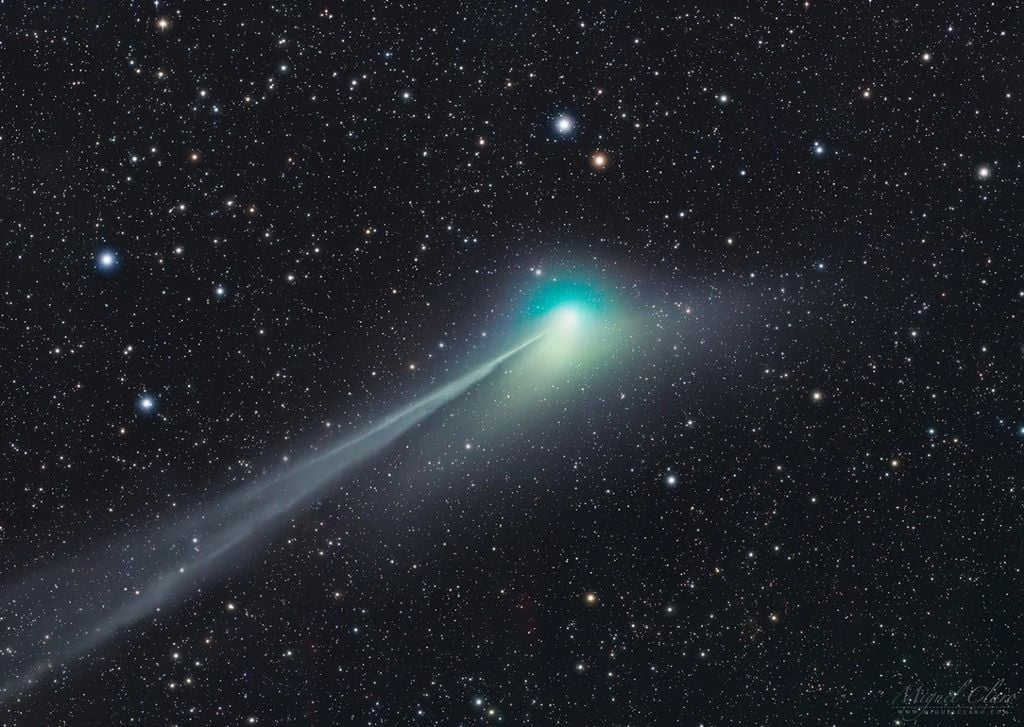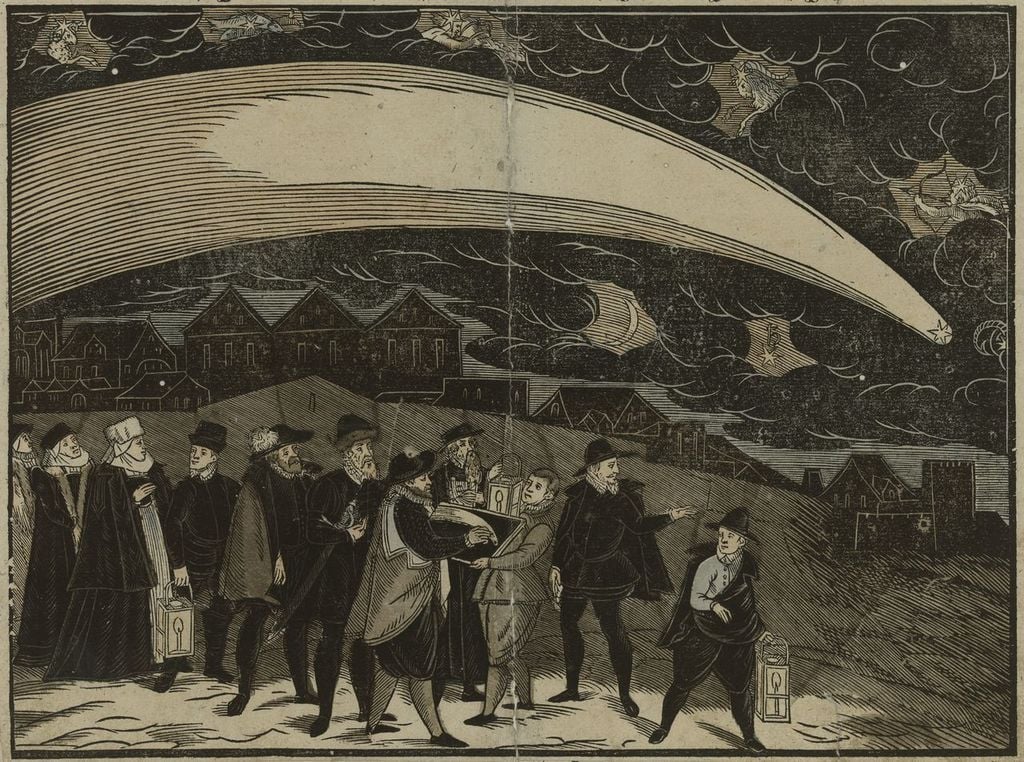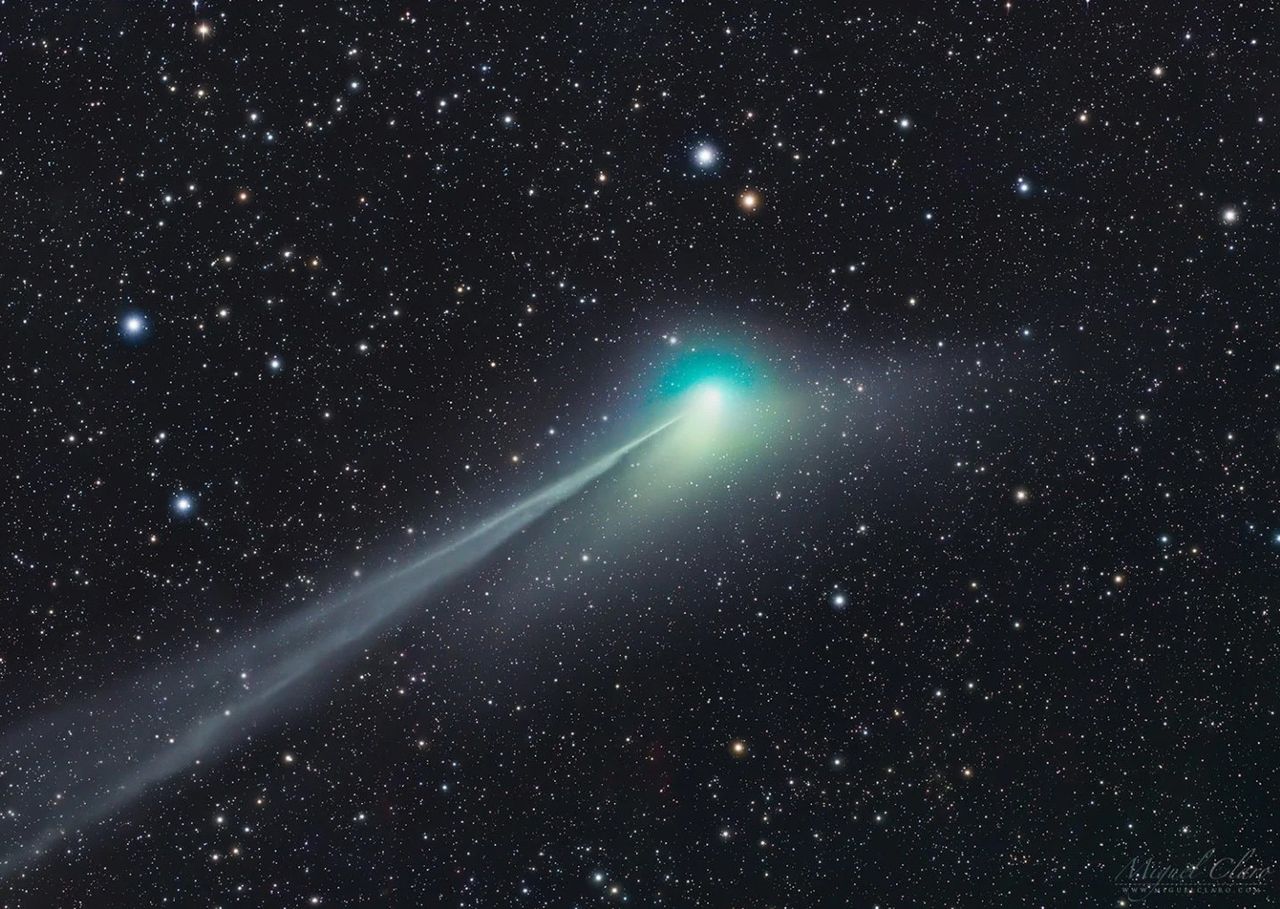
Tomorrow, Wednesday (February 1, 2023), the “green comet” will reach its closest point to Earth: about 42 million km. It’s been a few days now visible to the naked eye (as an astronomical body with a stellar magnitude of +5) from the northern hemisphere, and over the next few days it will also begin to be present from the south. Under conditions of optimal visibility of the night sky, the human eye can observe stellar objects with magnitudes up to +6.
It is already visible to the naked eye as an astronomical object of +5 magnitude, with the human eye capable of observing stellar objects down to +6 magnitude.
The comet began to be called “green”, because this is the striking color its coma (the gaseous cloud surrounding its nucleus) shows in astrophotography. The object is listed under the name c/2022 E3 (ZTF).. The reference to 2022 is because It was discovered last year (precisely on March 2) by two American astronomers, through a wide-field camera from the Palomar Observatory, near San DiegoCalifornia, in the USA, is integrated into an automated sky-watching program called Zwicky Transit FacilityHence the acronym ZTF which also includes the comet’s technical name.
The comet’s nucleus is less than two kilometers in diameter.but as soon as it got closer to the Sun (it reached perihelion on January 12), it began to increase in visibility from Earth, thanks to the spread of several tails several million kilometers long.
The comet has an eccentric orbit The last time it came close to Earth was at least 50,000 years ago, during the last ice age, when it existed Europe Neanderthals coexisted (already in decline) and Homo sapiens. It is interesting to know that during some of the cold and dark nights of that time, our ancestors saw the same green comet in the sky.
Comets throughout history
The truth is that there are hundreds of comets that have appeared in the sky throughout human history. For a long time they were interpreted as heralds of misfortunes. In the old GreeceAnd Aristotle in his treatise “Meteorites” (IV century BC) mistakenly gave the nature of the atmosphere. (contradicting the ideas of other Greek philosophers such as Democritus), this error dragged on for many centuries, until we finally realized, thanks to the development of astronomy, that they were bodies of extraterrestrial origin that traveled the universe.

According to Aristotle, comets formed in the sublunar region., which was one of the regions into which the sky was divided in classical times, leaving below the regions associated with each of the four basic elements of nature (air, water, earth, and fire) and above the spheres of the planets and heaven. Starry vault.
We had to wait until the sixteenth century when After the passage of the great comet in 1577, the Danish astronomer Thicho Brahe (1546-1601) concluded that this and other comets were astronomical bodies.Comet C / 2022 E3 (ZTF) periodically approaches Earth, as it does these days.
How to Observe the ‘Green Comet’ (ZFT)
Although, as we indicated, the comet was already visible for a few days in the Northern Hemisphere, Light pollution in our cities and the presence of the moon during part of the morning makes it difficult to spot with the naked eye. From the “small cloud” (a small spot of diffused light) we can appreciate it, so it is advisable to use binoculars (mounted on a tripod) or a small telescope, in which case we will be able to see a long tail.
Will we be able to see a comet with the naked eye in the next few weeks? @employeefrom @employeetelling us what we know about comet C/2022 E3, better known as #ZTF or “green kite”:https://t.co/uZEuo0zNq8
– Conversation ES (Conversation_E) January 30, 2023
To be able to monitor it successfully, the first thing we must do is Get far enough away from cities or population centersLooking for as dark a sky as possible. also You have to avoid moon hoursfor which everyone gets up early, and watches during the two hours before dawn. Of course, the sky must be clear, and this week it is guaranteed in most of Spain. We’ll have to direct our gaze (binoculars or a telescope) to the north, precisely to the Little Dipper. We’ll see the comet not far from its brightest star, Polaristhough in the next few days it will move away toward the neighboring constellation of Auriga (El Cochero), positioning itself very close to the bright star Capella on February 5.

“Beer enthusiast. Subtly charming alcohol junkie. Wannabe internet buff. Typical pop culture lover.”

:quality(85)/cloudfront-us-east-1.images.arcpublishing.com/infobae/3FK4NB2IUBDNLGMO42HMXAA4JY.jpg)
:quality(75)/cloudfront-us-east-1.images.arcpublishing.com/elcomercio/Y5SIZUFLEBBRFC6B5SA4DT4R6I.jpg)




More Stories
The first launch of the Starliner ship arrives with astronauts on board
A wonderful trip to the prestigious Xerox PARC laboratory
The secret to always having free WiFi, even if you don’t know the password